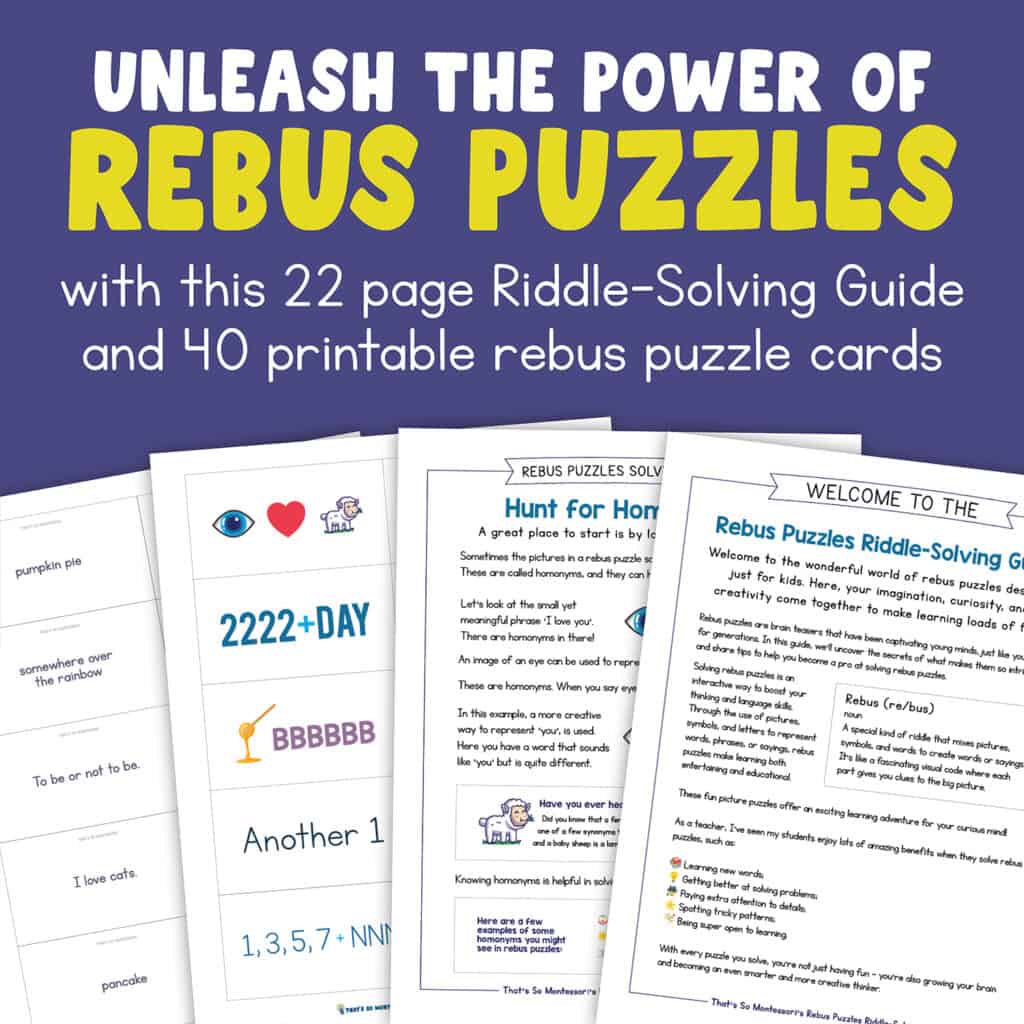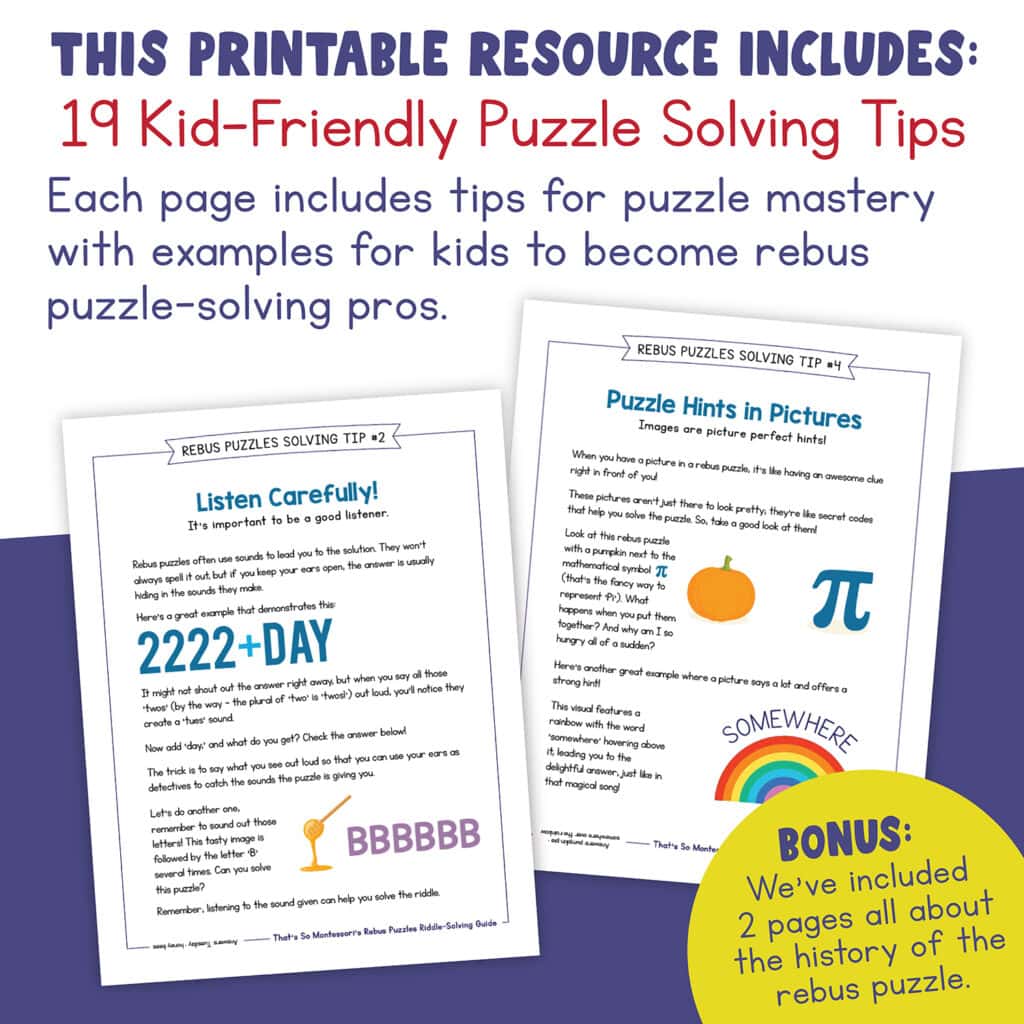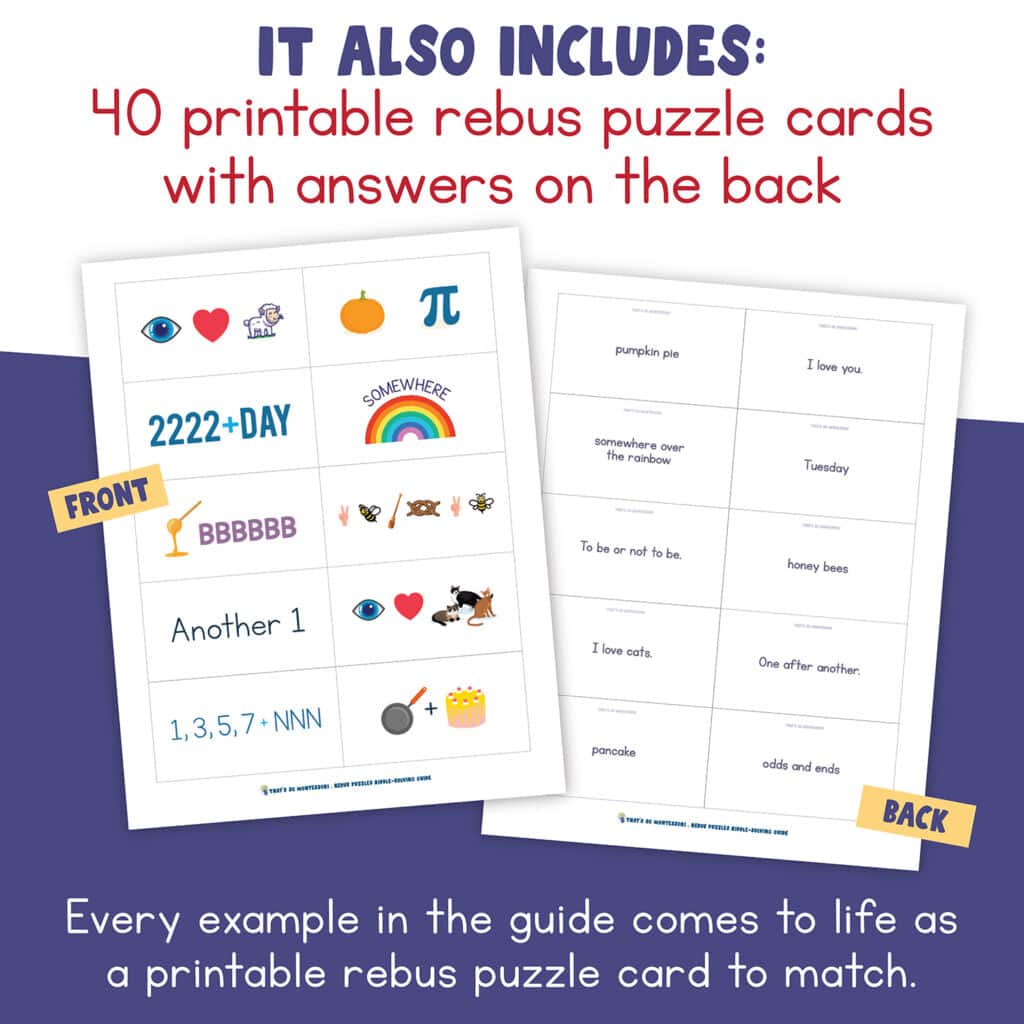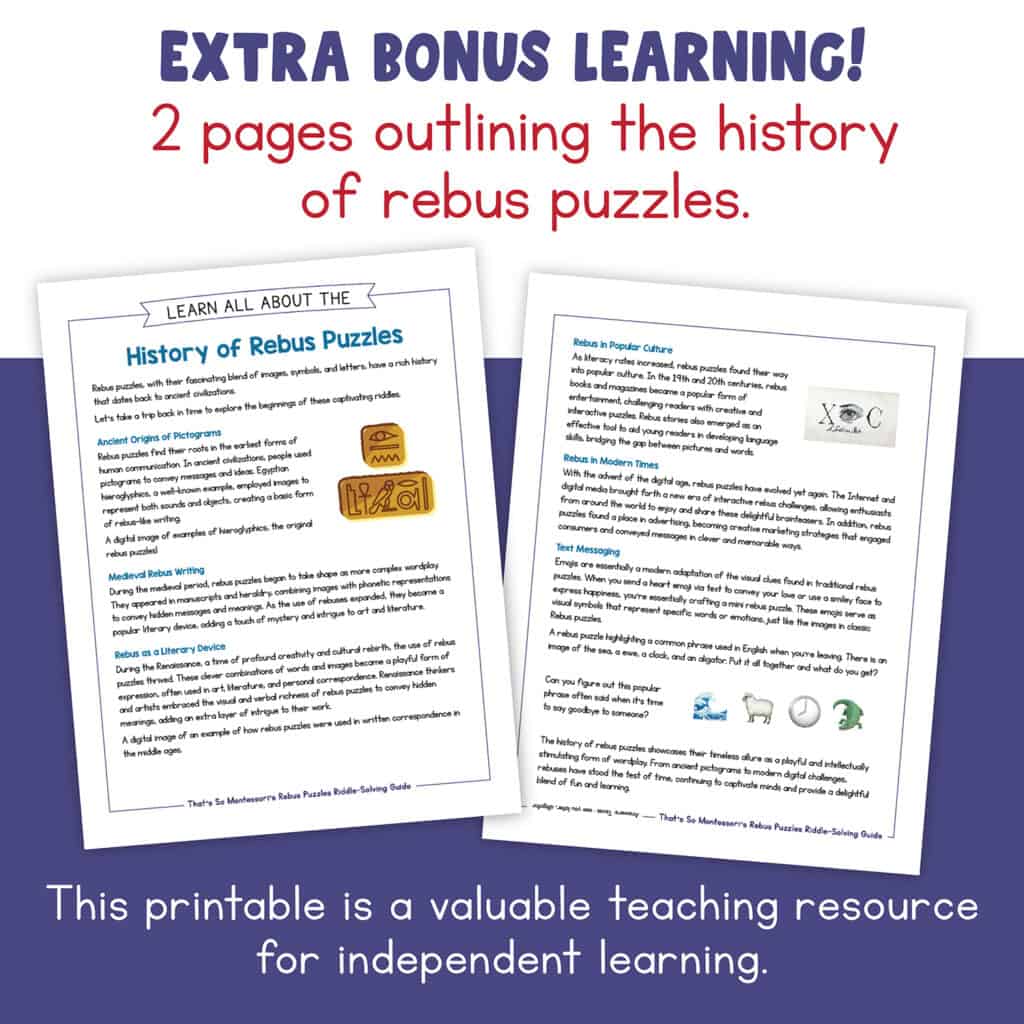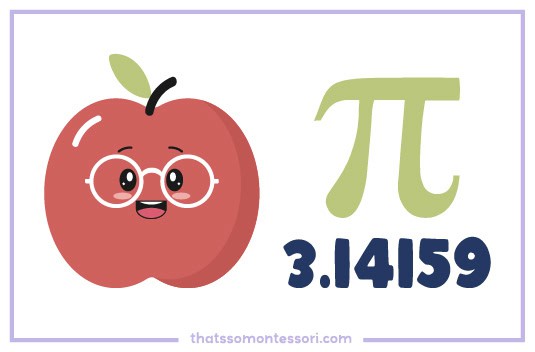9 Interesting Activities to do with Rebus Picture Puzzles
Curious to know how to incorporate rebus picture puzzles into elementary student learning?
As an elementary Montessori teacher who has used these types of puzzles with students for in-person and online learning, I can attest to their effectiveness and popularity.
That’s right! Rebus puzzles aren’t just perfect for independent play – they’re also incredibly versatile for classroom use.
Continue reading to find out how you can incorporate rebus puzzles into activities that engage and educate children, helping them reach their full potential while having fun!
💡🧩💡🧩💡
Love Rebus Puzzles? Then Bundle Up!
We created 40+ rebus puzzles with answers & tips for kids.
9 Activities to Do With Rebus Picture Puzzles
Here’s how you can effectively use rebus puzzles to add fun and education to your elementary students’ learning. By engaging with these challenges, you can turn your students into confident rebus puzzles solvers, building their problem-solving skills and sparking their creativity!
1. Rebus Picture Puzzles Card Game Race
Almost every kid loves a good race, a challenge to see who can come in first. Let that natural competitiveness push students to use their minds as they engage in a fast-paced mentally stimulating activity.
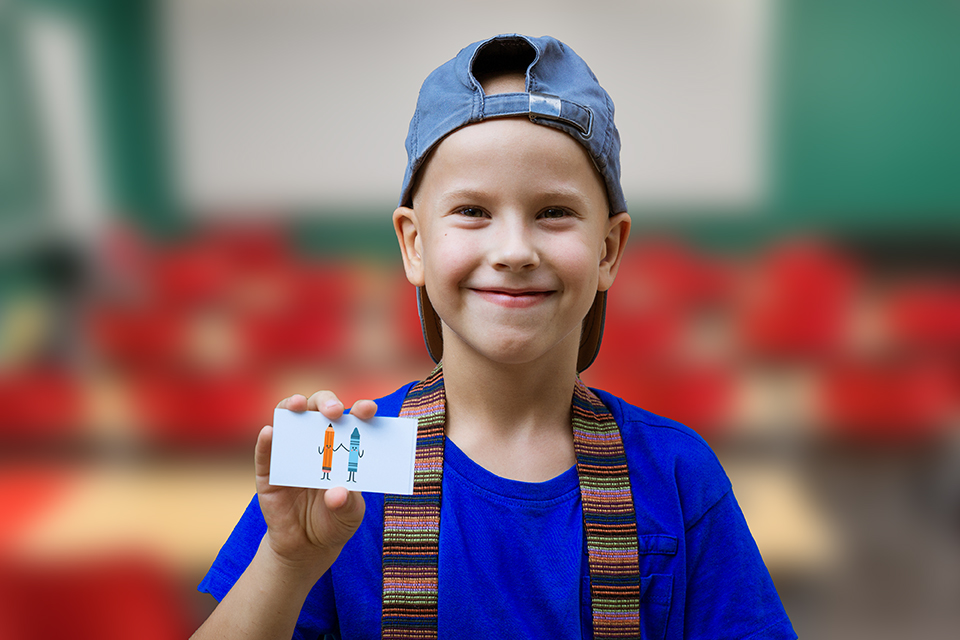
Rebus puzzles with pictures make for an engaging thought-based race, especially with a stack of rebus puzzle questions on hand.
Start by shuffling the cards and flipping over the top card for all players to see. Players will have a set time – I give my upper elementary students 2 minutes – to solve the rebus puzzle.
They can raise their hands or buzz in when they think they’ve figured it out. The first player to answer correctly wins the card.
The goal is to see who can solve the most rebus puzzles, and consequently have the most rebus puzzle cards after a pre-determined amount of playing time or until you get through the whole stack of cards.

This can be done with as little as two players and a many 5 or 6. Any bigger and I find there’s not enough points to make it fun or competitive.
Variation: Each player draws one card and keeps it face down until the timer starts. Once the timer begins, they flip the card over and work on solving their own puzzle. Be sure to include a mix of easy rebus puzzles, intermediate rebus puzzles, and even trickier rebus puzzles to accommodate all skill levels.
2. Team Play with Rebus Picture Puzzles
Organize students into teams and present each team with the same 5 rebus puzzles.
➡️ Here’s a list of 9 unique rebus puzzle cards to get you started.
Challenge your students to work together as a group to solve and write down the answer to each rebus puzzle, aiming to complete as many brain teasers as they can within 5 minutes.
See which team can solve the most rebus puzzles the fastest.

Team play fosters cooperation, communication, and critical thinking as students work collectively to find solutions.
Variation: To simplify the activity, assign each team one rebus puzzle to solve within a a 1 to 2 minute time frame. For added difficulty, provide teams with a new rebus puzzle card each time they successfully solve one. Challenge them to see how many rebus puzzles they can solve within 5 minutes.
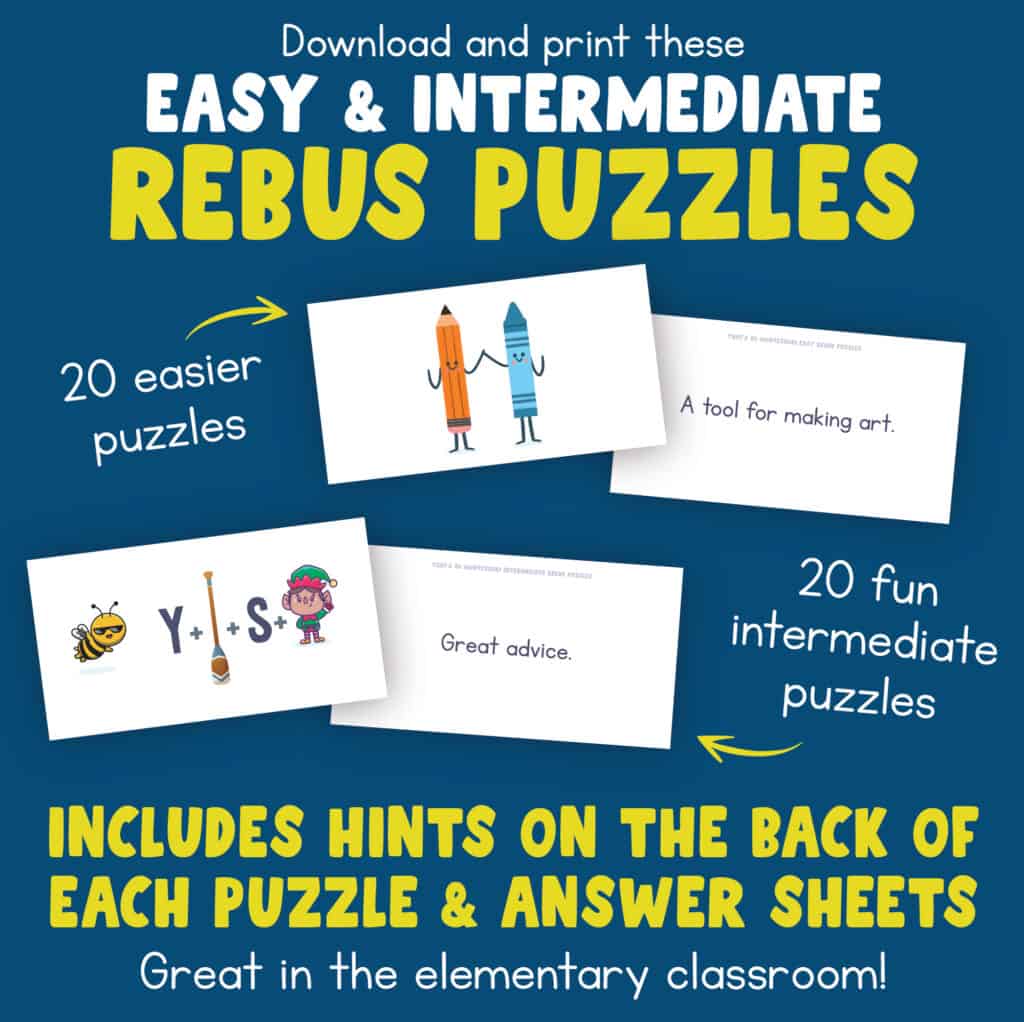
Get 40 Unique Rebus Puzzles With Answers for Classroom Use!
Transform your classroom into a hub of interactive learning and fun with our set of unique rebus puzzles.
Watch as your students develop essential problem-solving skills while enjoying every moment of the challenge!
3. Creative Writing Prompt
Challenge students to write a short story or poem based on a phrase they decoded from a rebus puzzle. This activity sparks creativity as they turn the puzzle’s clues into imaginative narratives or verses.
Solving rebus puzzles helps students broaden their vocabulary development and express their ideas with greater clarity.
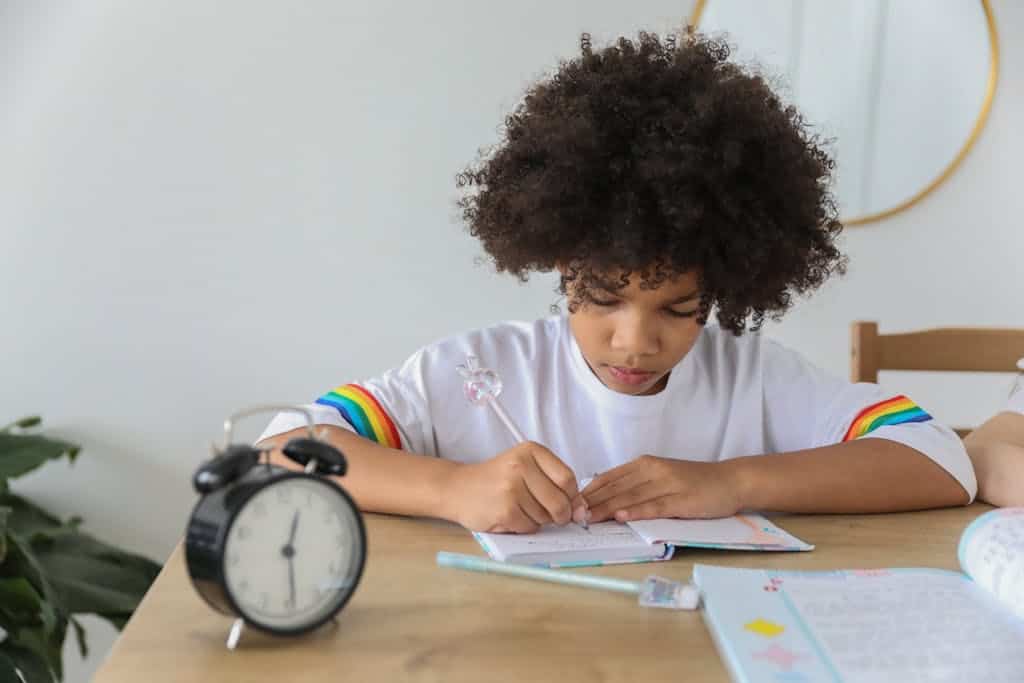
Variation: Equip students with three rebus picture puzzles, each presenting a unique story element for their writing. Students will decode these puzzles and incorporate all three rebus puzzle answers creatively into a story with an exciting and unexpecting ending.
Looking for another fun creative writing activity for your classroom? Then check out our Printable Story Dice and 11 Interesting Ways to Use Them!
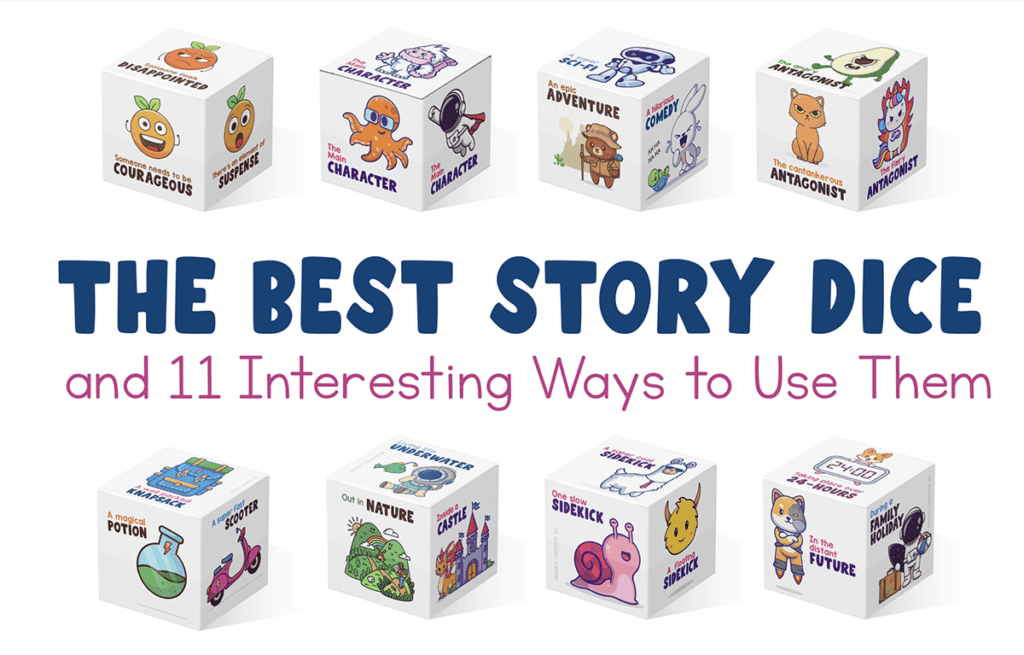
4. Charades with a Rebus Picture Puzzle Twist
Get creative by turning a rebus puzzle game into an exhilarating charades experience!
For this game, I recommend using simpler rebus puzzle cards. You can download a FREE set from this blog post. Bonus – it comes with answers!
Here’s a sample of one of the cards in our free easy rebus picture puzzle download:
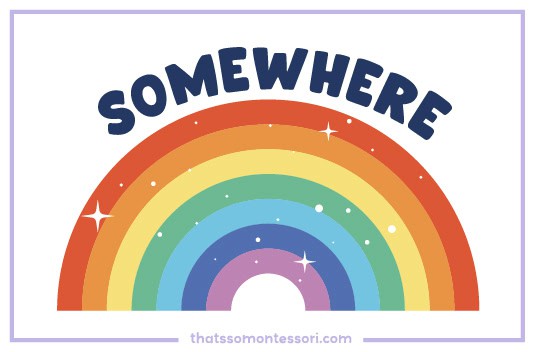
Start by having a student choose a rebus picture puzzle card. Give them some time to figure out the phrase, then they’ll act it out without speaking. The other players must use their observation skills to guess the phrase.
As the guessing ensues, students engage in lively physical movements and imaginative interpretation, fostering an atmosphere of enthusiasm and camaraderie.
Charades with rebus picture puzzles offers a multi-sensory approach to learning, encouraging students to think creatively and communicate non-verbally. It’s a dynamic activity that fosters teamwork and boosts confidence as students interact and engage with each other.
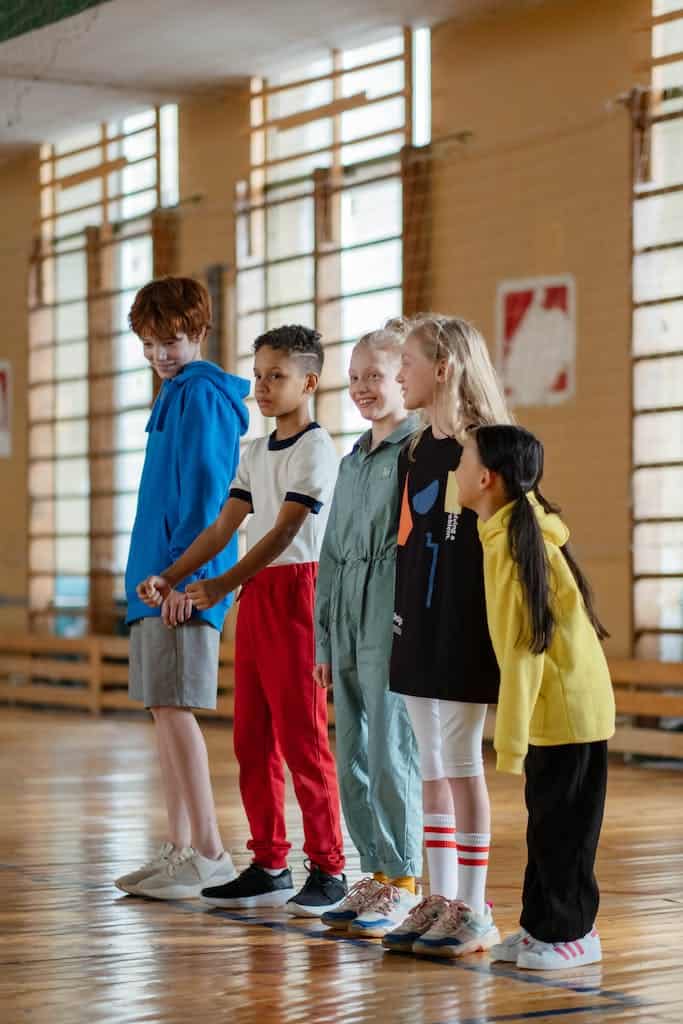
Variation: Divide students into teams. Each team selects and works together to act out one rebus puzzle for the opposing team to guess, adding a competitive twist to the game.
5. Create Original Rebus Picture Puzzles
Encourage students to channel their inner rebus puzzle maker by creating their own puzzles! This do-it-yourself activity promotes creativity and critical thinking while allowing them to utilize their knowledge of symbols and words to craft engaging challenges for their peers or family members.
Use our rebus picture puzzle Comprehensive Riddle-Solving Guide to help you teach your students all the essential elements of a rebus puzzle, making the learning process seamless and enjoyable.
As puzzle creators, students look at problem-solving from a unique angle, honing their ability to communicate ideas visually and decipher hidden meanings.
By designing original rebus puzzles, students exercise their imagination and linguistic skills, exploring various ways to convey messages through visual clues. They experiment with different combinations of images and text, striving to create puzzles that are both captivating and solvable.
Variation: To add an extra layer of difficulty, challenge students to incorporate quotes for peace or quotes for success into their DIY puzzles. You can also encourage students to create their own rebus puzzles based on classroom topics or subjects they are currently studying. This activity reinforces their comprehension of key concepts while also fostering creativity in how information is conveyed.
For instance, if students are learning about the area of a circle in math, they can incorporate symbols like π or the numerical value 3.14159 into their rebus puzzles.
This hands-on approach deepens their understanding of the topic and lets them explore imaginative ways of representing and communicating mathematical ideas.
6. Swap Some Song Lyrics With Symbols
In this creative exercise, students take a familiar song and rewrite its lyrics by replacing key words with symbols or images. This challenge encourages them to think creatively about how to visually represent words using pictures, letters, or symbols.
By substituting at least one word in each line with an image, students practice decoding and encoding, sharpening both their language and visual thinking skills.
Variation: Take the challenge up a notch by using only emojis to replace certain words in the lyrics. Students will need to carefully select emojis that best represent the meaning of the original words, considering both literal and figurative interpretations. This variation makes the activity more engaging and relevant to modern communication and also encourages students to think critically about language and symbolism.
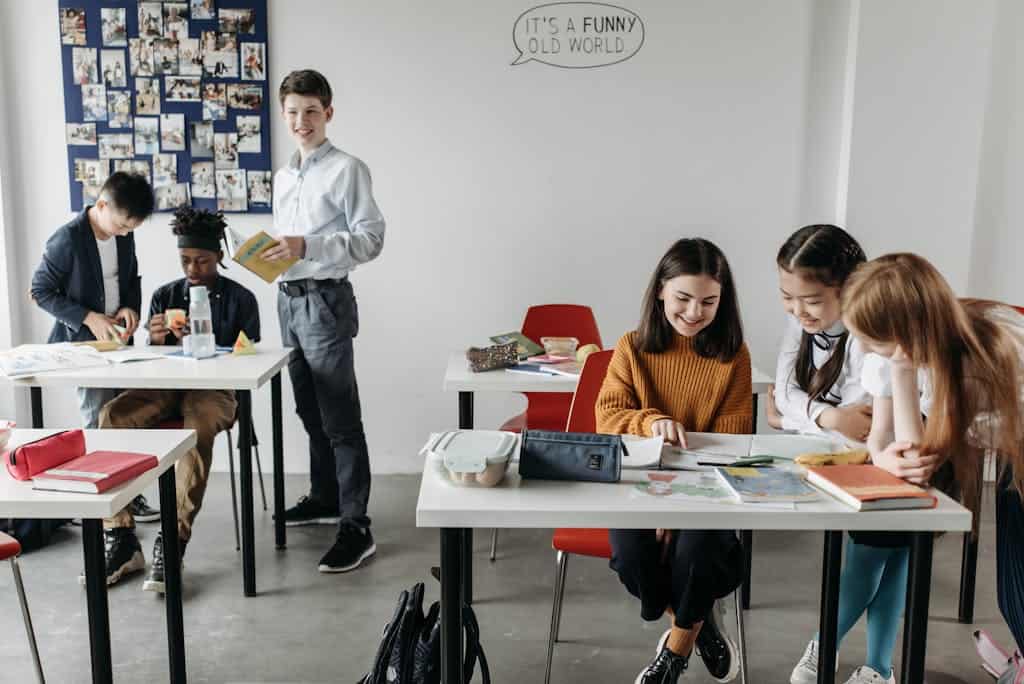
7. Use Rebus Picture Puzzles as Part of a Scavenger Hunt
A rebus puzzle scavenger hunt is an exciting activity that combines problem-solving with physical activity, making it perfect for groups of kids or even adults who enjoy some movement.
The objective of the scavenger hunt is to locate rebus puzzles hidden throughout a designated area, such as a classroom, home, backyard, or nearby park.
Participants receive a clue describing the whereabouts of their first rebus puzzle. As players or teams locate each puzzle, they must solve it correctly to unveil the next clue, keeping the momentum of the scavenger hunt going.
Clues may include hints like “search for a rebus puzzle near the tree with three branches” or “look for a puzzle under a flowerpot.”
This game continues until all the rebus puzzle pictures have been discovered, solved, and enjoyed by the group.
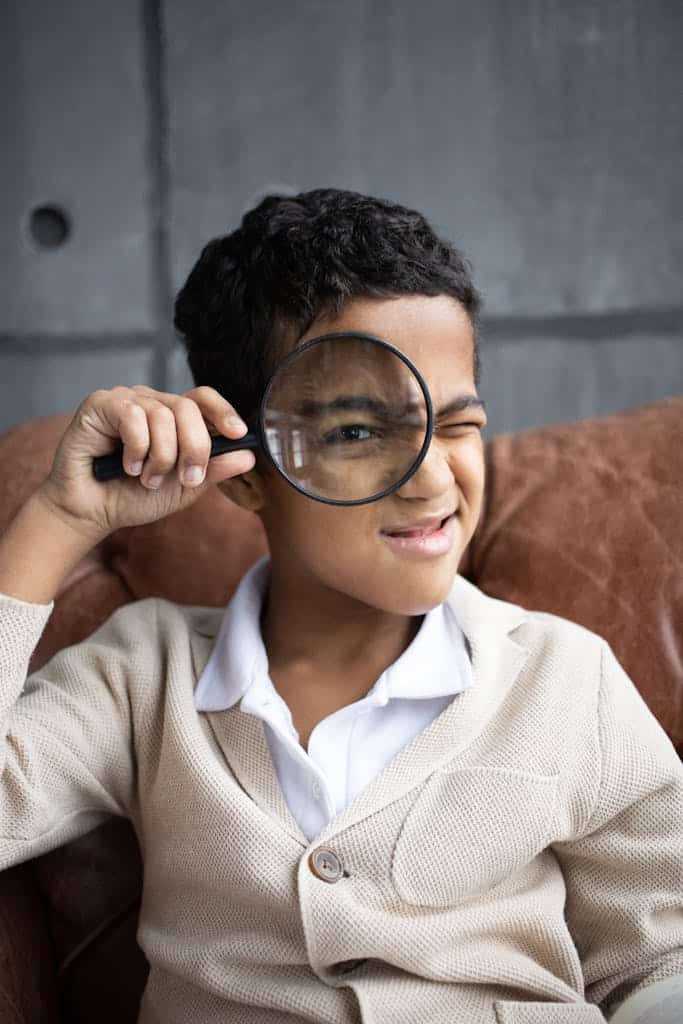
💡 Teacher Tip: Check out our how to make a scavenger hunt blog to help you kick off this fun activity!
Variation: Transform the scavenger hunt into a timed challenge where participants compete individually or in teams to find and solve as many rebus puzzles as possible within a set time limit. Each solved puzzle earns points, with bonus points awarded for finding and solving hidden “bonus” tasks scattered throughout the area.
8. Rebus Picture Puzzle Relay Race
This race is another mentally and physically intense activity for students in the second plane of development. The aim of the game is for each team to solve a rebus puzzle before receiving another from their racing player.
Each team will designate one player to retrieve a puzzle from across the designated playing area. They’ll return to their team with the puzzle, and then as a team they will solve it. Once solved, the next team member retrieves the next clue, continuing the process.
The teams must solve the picture puzzles as quickly as possible so that the next player can run to get the next rebus puzzle.
First team to have all puzzles solved wins the game.
Variation: Turn the relay race into an exciting obstacle course challenge! Each team member races over, under, around, and through obstacles to retrieve their rebus puzzle and run it back to their team to solve before the next runner goes.
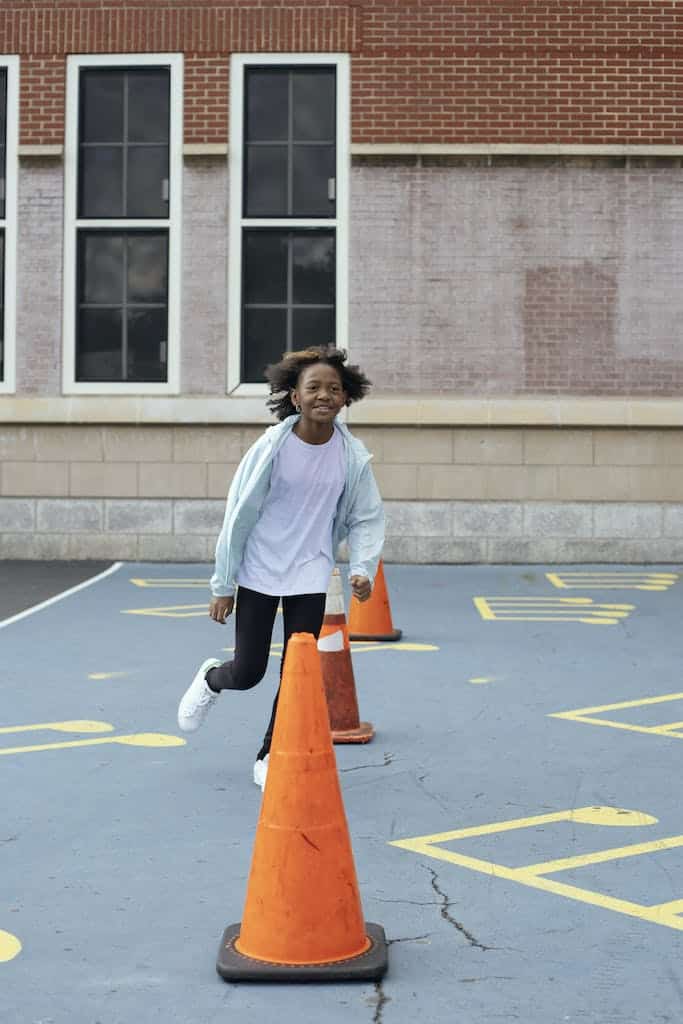
💡 Teacher Tip: Not enough space for all that running?
If you don’t have enough space for running, incorporate stationary movements like jumping jacks, squats, mountain climbers, or burpees as part of your relay race. This keeps students active in small spaces while they work on solving their puzzle.
9. Boost Math Skills with Rebus Picture Puzzles
Add a twist to math practice with rebus puzzles and see your students approach the subject with a fresh perspective – and maybe even a smile!
Create a rebus puzzle worksheet using familiar mathematical symbols and terms like the Pi (π), division (÷), or infinity (∞) signs. You can also include symbols such as the addition (+), subtraction (−), and multiplication (×) symbols, as well as concepts like squaring (²) and square root (√).
By solving these puzzles, students will reinforce their understanding of math concepts in a fun, engaging way – it’s learning in disguise!
This fun, cross-disciplinary activity sharpens problem-solving skills while reinforcing math in a creative, engaging way.

💡 Teacher Tip: Use resources such as this one to find a list of math symbols that your students can refer to.
Solving rebus puzzles makes math fun and less scary. It’s like a fun game that helps you learn without even realizing it.
Variation: Design rebus puzzles that incorporate symbols from science or other subjects like history, geography, or literature. For example, use chemical symbols, historical figures, or geographical landmarks in the puzzles. As students decode these puzzles, they’ll engage with subject-specific content, reinforcing their knowledge in a fun and interactive way.
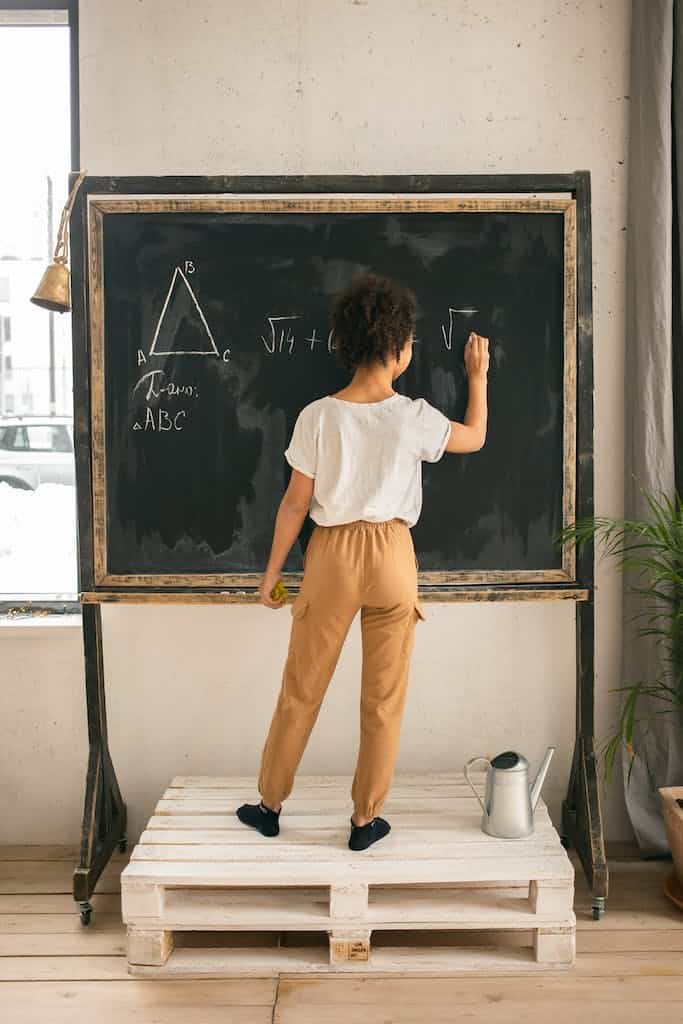
This activity strengthens their grasp of different subjects while also prompting them to expand their understanding and explore new symbols in an engaging format.
Using Rebus Picture Puzzles with Kids
Wondering when to introduce these brain teasers to elementary kids? Here are some ideal times:
In the Classroom
Rebus puzzle worksheets are an educators secret tool for engaging children in their learning! Use them as captivating warm-up activities, end-of-day brain-teasers, teachable moments, or compliment a language lesson on idioms with them. They encourage students to think critically and unleash their creativity.
On Vacation
Hit the road – or fly through the open air – with rebus puzzles as your trusty travel companions. They’ll keep young minds active during long journeys and provide a screen-free, brain-boosting alternative for entertainment.
At Home with Family
Make game nights and lazy weekends unforgettable by solving rebus puzzles together as a family. They offer a unique opportunity for quality family time and fun.
In the Car or Waiting at Appointments
Rebus puzzles are a great way to entertain kids on-the-go. Utilize them as engaging distractions during waits at the doctor’s office or car rides to school. Witness their minds open as they are enjoying these entertaining brain teasers.
At the Park or Outdoor Events
Take advantage of outdoor settings by incorporating rebus puzzles. They add an element of brainy fun to picnics or outdoor events, offering an enjoyable mental challenge out in the fresh air.
During Family Gatherings
Get everyone having fun together at family gatherings with rebus puzzles! They’re a delightful way to bond across generations, fostering teamwork and laughter as everyone collaborates to solve them.
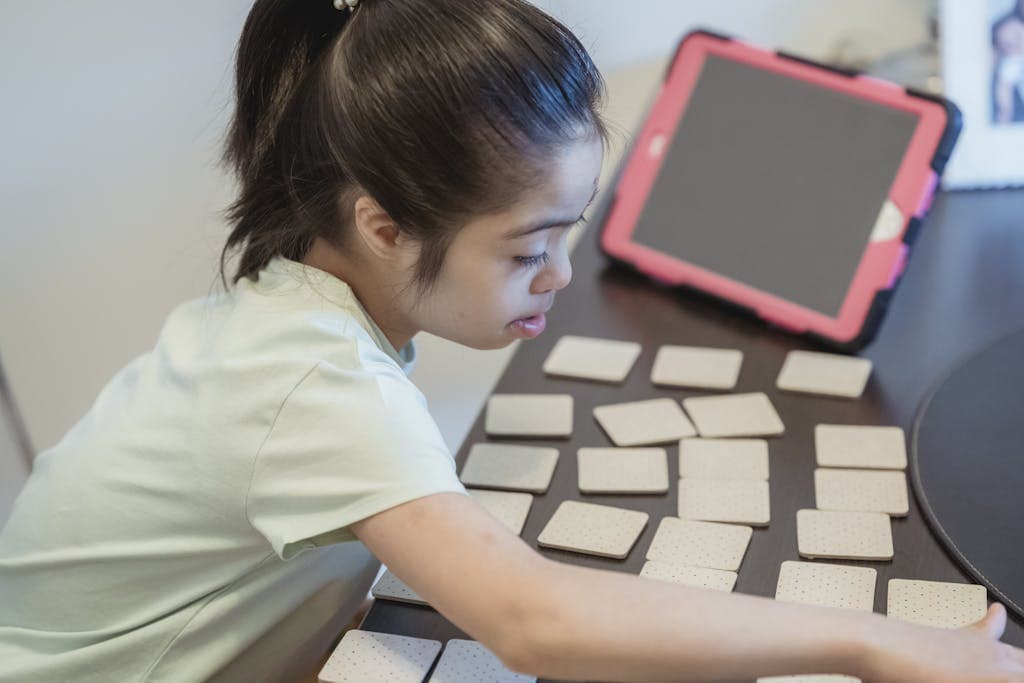
Rebus Picture Puzzles Are Versatile
As a Montessori teacher, I’ve found that rebus puzzles are incredibly versatile and a serious amount of fun.
Incorporating these puzzles highlights the benefits of games in the classroom, making learning more engaging and effective for students.
Here are a few great ways to add them to your students learning:
Solo Challenges
If you have a student looking to put their problem-solving skills to the test, have them solve rebus puzzles independently.
Remind them to take their time deciphering the hidden phrases, and let them know that if they get stuck, they can always flip the card to reveal a hint.
Participating in solo challenges helps students develop critical thinking skills, broaden their vocabulary, and sharpen their ability to think creatively.
Group Activities
Ideal for classrooms, family game nights, and even play dates, rebus puzzles are a great group activity.
Gather participants and take turns choosing cards and solving brain-teasers. Encourage lively discussions and teamwork to collectively decipher the phrases, and consider adding a timer for an element of excitement.
Fostering teamwork, enhances communication, and sparks friendly competition.
Classroom Connections
For educators seeking engaging and interactive teaching tools, rebus puzzles fit seamlessly into your lessons.
Use them to reinforce various language lesson topics, including idioms, parts of speech, story writing, figurative language, and compound words.
These puzzles work wonderfully as warm-up activities, follow-up tasks, or interactive classroom games. Expect heightened student engagement, improved vocabulary retention, and sharper problem-solving abilities.
Icebreakers and Team Building
Perfect for team-building workshops, school events, or gatherings, rebus puzzles serve as engaging icebreakers and team-building activities. They have the ability to get people talking and working together to discuss possibilities.
Teams work together to solve puzzles, fostering communication, collaboration, and problem-solving skills within the group. This leads to improved teamwork, better problem-solving, and enhanced communication, all in a fun and interactive setting.
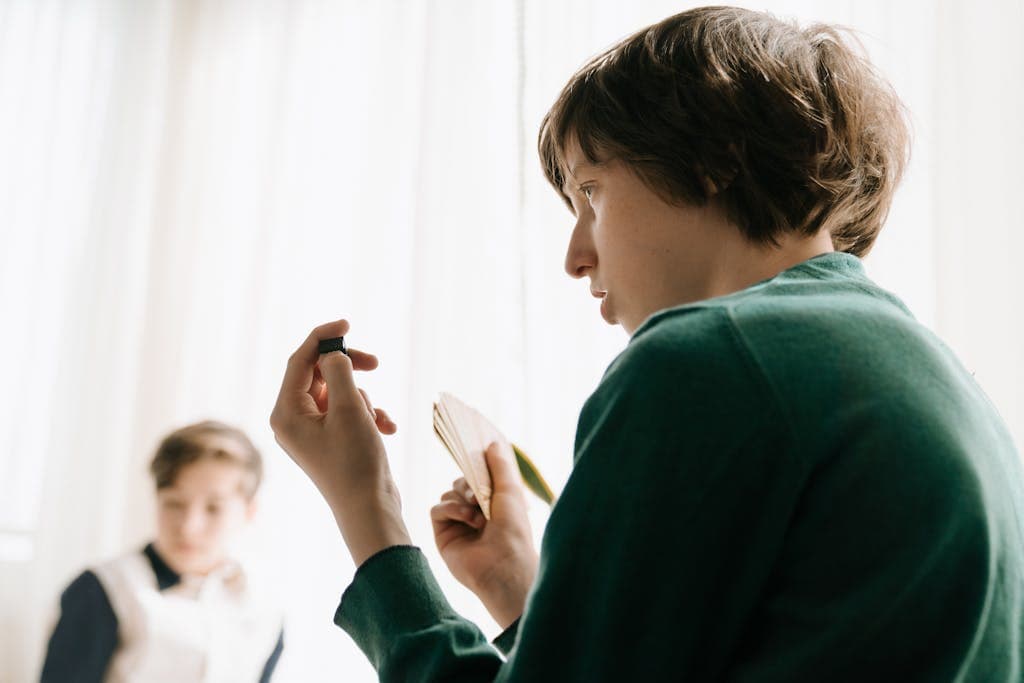
The Wrap-Up: Activities to do with Rebus Picture Puzzles
Rebus puzzles offer endless opportunities to make learning with kids exciting. Whether you’re a teacher, parent, or caregiver, these puzzles boost critical thinking and spark creativity. By incorporating them into your learning routine, you’ll add a fun and educational dimension to your interactions with kids.
Consider this your invitation to explore the world of rebus puzzles with your students and get going on an exciting learning journey. With each puzzle, students will unleash their creativity and explore boundless possibilities!
Be sure to 📌 PIN this blog so you can easily find it later!
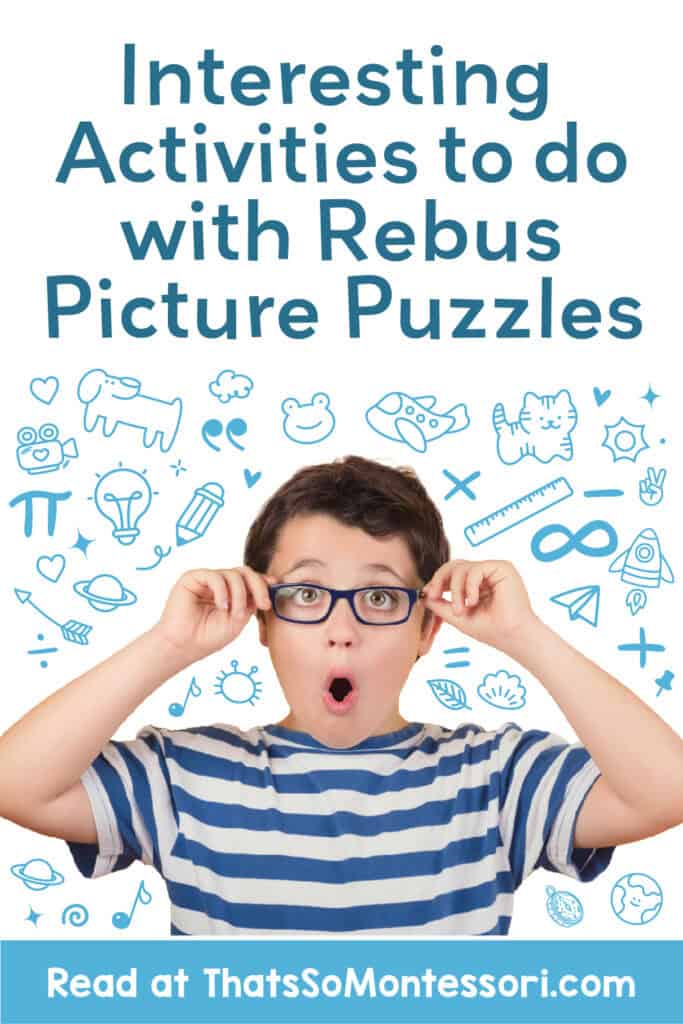
Keep Kids Learning with Educational Activities
11 Ways to Use Our Roll A Story Dice Game
Book Report Ideas for 5th Grade that Spark Imagination
31 Fun Summer Reading Activities Elementary Students Will Love
57 Epic Montessori-Aligned Spring Break Activities for Your Kids
Rebus Puzzles for Kids: A Comprehensive Riddle-Solving Guide
The Best Neighborhood Walk Scavenger Hunt and 13 Different Ways to Use It
Elevate Elementary Math Skills with This Exciting Math Card Game
Score Big with These 9 Super Bowl Classroom Activities
27 Educational YouTube Channels to Prevent Summer Learning Loss



